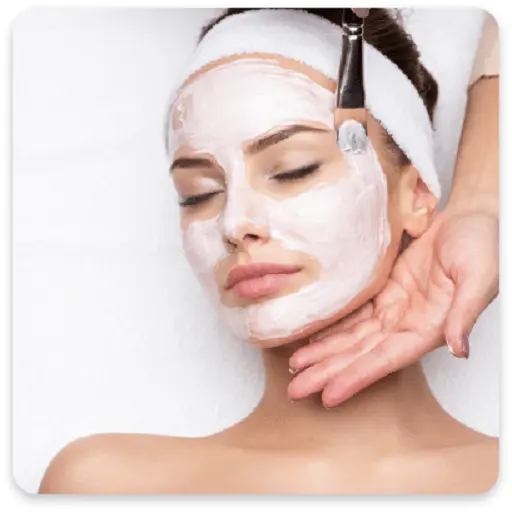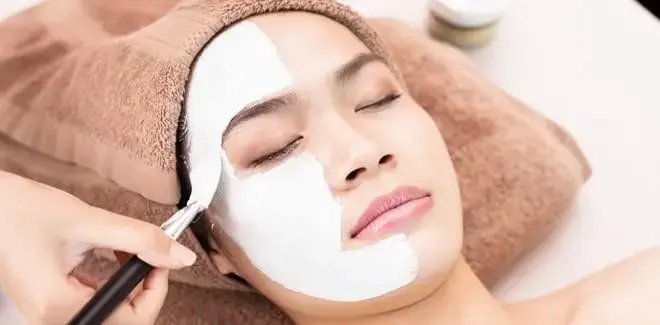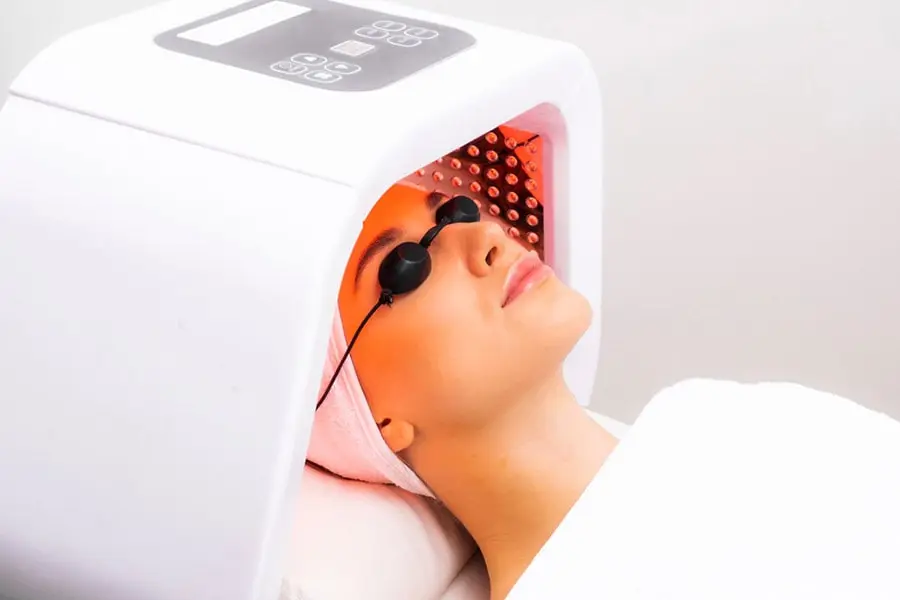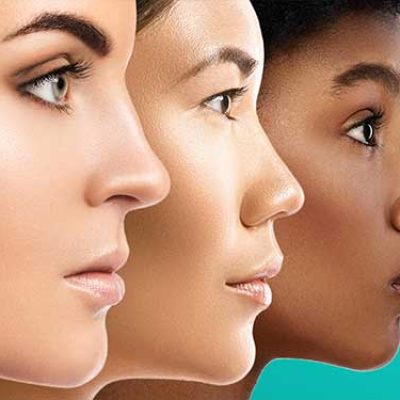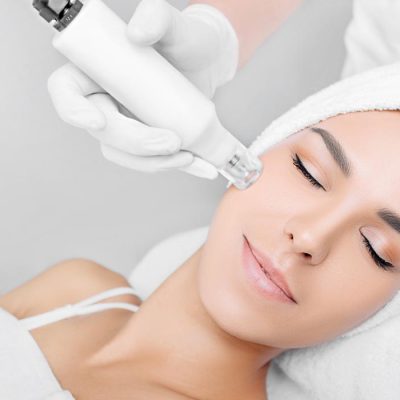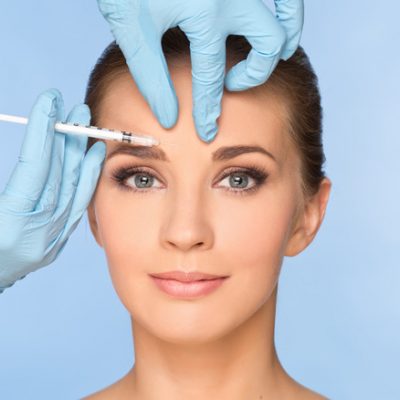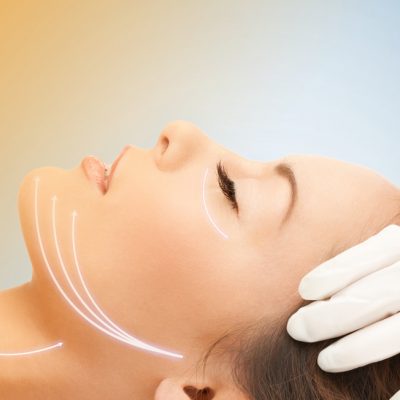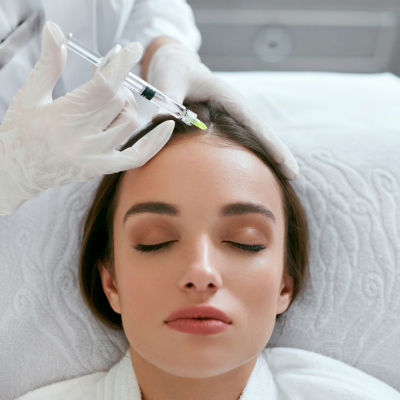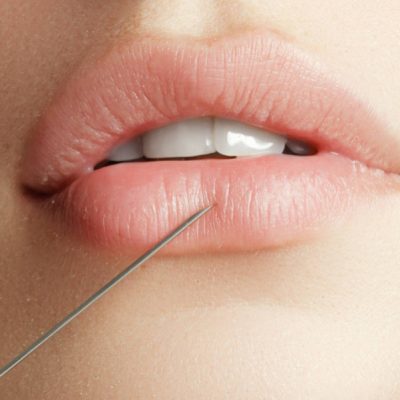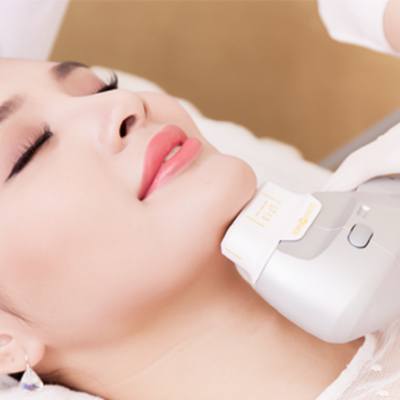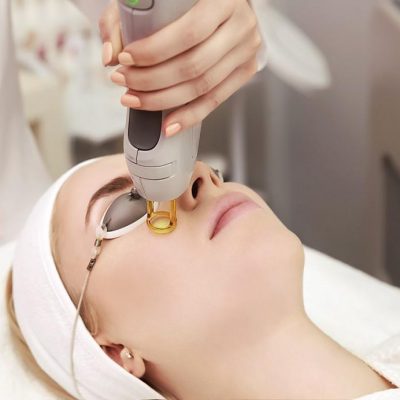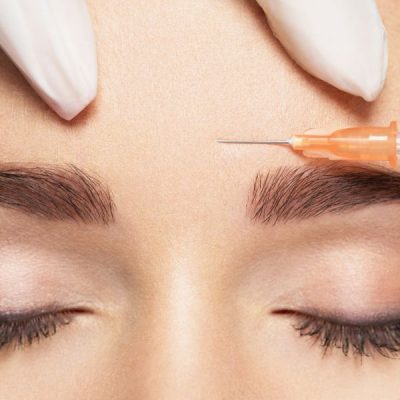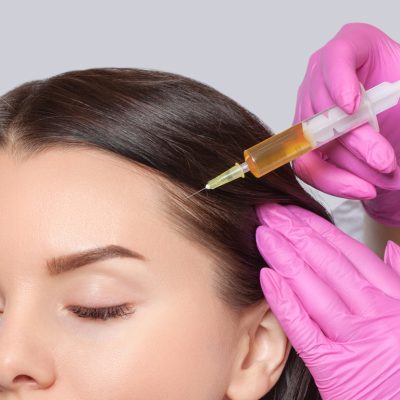There are many different types of facials that are designed to address various skin concerns and needs. Here are some of the most common types of facials:
- Deep Cleansing Facial: This type of facial is designed to clean the skin deeply, removing dirt, oil, and impurities from the pores. It often includes steam, exfoliation, and extractions.
- Anti-Aging Facial: This type of facial is designed to help reduce the signs of aging, such as fine lines and wrinkles. It often includes ingredients like antioxidants, peptides, and hyaluronic acid.
- Acne Facial: This type of facial is designed to address acne-prone skin, reducing inflammation, and preventing breakouts. It often includes salicylic acid and other acne-fighting ingredients.
- Hydrating Facial: This type of facial is designed to hydrate dry and dehydrated skin, often using ingredients like hyaluronic acid, aloe vera, and glycerin.
- Brightening Facial: This type of facial is designed to even out skin tone and reduce the appearance of dark spots and hyperpigmentation. It often includes ingredients like vitamin C, kojic acid, and niacinamide.
- Oxygen Facial: This type of facial is designed to infuse oxygen into the skin, which can help improve circulation and give the skin a healthy glow. It often includes a serum or mask that is applied with a special oxygen wand.
- Microdermabrasion Facial: This type of facial uses a special device that exfoliates the top layer of skin, helping to reduce the appearance of fine lines, scars, and hyperpigmentation. It can also help to stimulate collagen production.
- LED Facial: This type of facial uses light therapy to treat various skin concerns, such as acne, inflammation, and aging. Different colored lights are used to target specific issues.
- Gold Facial: This type of facial uses gold-infused products to help improve skin elasticity and reduce the appearance of fine lines and wrinkles. It can also help to brighten the skin and improve circulation.
- Chemical Peel Facial: This type of facial uses a chemical solution to exfoliate the skin and improve its texture and tone. It can help to reduce fine lines, wrinkles, and sun damage, as well as improve acne-prone skin.
It’s important to consult with a skincare professional to determine which type of facial is best suited to your individual skin concerns and needs.

Introducing Different types of facials
Facials are a popular skincare treatment that can help to improve the health and appearance of the skin. Here are some of the most common types of facials:
Deep Cleansing Facial
A deep cleansing facial is a type of facial that is designed to clean the skin deeply, removing dirt, oil, and impurities from the pores. It’s an excellent treatment for people with oily or acne-prone skin, as well as those who want to improve the overall appearance and texture of their skin.
The process of a deep cleansing facial typically involves several steps. First, the skin is cleansed with a gentle cleanser to remove surface-level dirt and makeup. Next, a steamer is used to open up the pores and soften any hardened sebum that may be clogging them. This is followed by gentle exfoliation to remove dead skin cells and surface-level impurities.
After exfoliation, the esthetician will perform extractions, which involves using a special tool to remove any blackheads or whiteheads that are present. This step can be uncomfortable for some people, but it’s important to remove these impurities to prevent further breakouts.
Once the extractions are complete, a facial mask is applied to the skin. This mask can be customized to the individual’s skin type and concerns. For example, someone with oily skin may benefit from a clay mask, while someone with dry skin may benefit from a hydrating mask.
After the mask is removed, the esthetician will typically apply a toner and moisturizer to the skin to help soothe and hydrate it. They may also recommend specific products or treatments to help maintain the results of the facial.
Overall, a deep cleansing facial is an excellent way to give your skin a thorough cleaning and improve its overall appearance and texture. It’s important to have this type of facial done by a licensed esthetician who can customize the treatment to your individual skin concerns and needs. It’s also important to follow a good skincare routine at home and use products that are appropriate for your skin type to maintain the results of the facial.
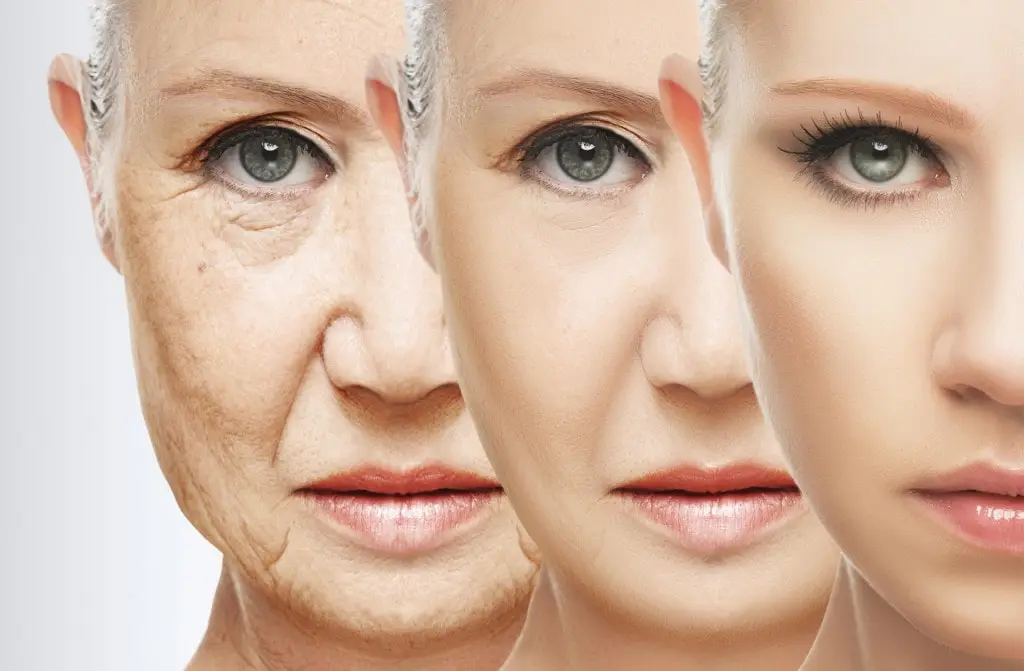
Anti-Aging Facial
An anti-aging facial is a type of facial that is designed to help reduce the signs of aging, such as fine lines, wrinkles, and age spots. It can also help to improve skin texture and tone, as well as increase hydration and firmness.
The process of an anti-aging facial typically involves several steps. First, the skin is cleansed with a gentle cleanser to remove surface-level dirt and makeup. Next, a steamer may be used to open up the pores and hydrate the skin.
After steaming, the esthetician will typically perform gentle exfoliation to help remove dead skin cells and improve skin texture. This may involve the use of a gentle scrub, enzyme peel, or other exfoliating product.
Once the skin has been exfoliated, the esthetician may perform extractions to remove any blackheads or whiteheads that are present. This step is optional and may not be necessary for all clients.
After extractions, a facial mask is applied to the skin. This mask is typically formulated with anti-aging ingredients, such as peptides, antioxidants, or hyaluronic acid, to help nourish and hydrate the skin.
Once the mask has been removed, the esthetician will typically apply a serum or treatment to the skin to help firm and tone it. They may also apply an eye cream or treatment to address fine lines and wrinkles around the eyes.
Finally, a moisturizer and sunscreen are applied to the skin to helpprotect it from further damage and to keep it looking hydrated and healthy.
It’s important to note that the results of an anti-aging facial are typically temporary and may last for a few days to a few weeks. To see longer-lasting results, it’s important to follow a good skincare routine at home and to use products that are formulated with anti-aging ingredients. This may include using a retinol product, which can help to stimulate collagen production and reduce the appearance of fine lines and wrinkles over time.
Overall, an anti-aging facial can be a great way to pamper your skin and give it a boost of hydration and nourishment. It’s important to have this type of facial done by a licensed esthetician who can customize the treatment to your individual skin concerns and needs.

Acne Facial
An acne facial is a type of facial that is designed to address acne-prone skin. It can help to reduce inflammation, prevent breakouts, and improve the overall appearance and texture of the skin.
The process of an acne facial typically involves several steps. First, the skin is cleansed with a gentle cleanser to remove surface-level dirt and oil. Next, a steamer may be used to open up the pores and soften any hardened sebum that may be clogging them.
After steaming, the esthetician will typically perform gentle exfoliation to help remove dead skin cells and improve skin texture. This may involve the use of a gentle scrub or enzyme peel.
Once the skin has been exfoliated, the esthetician will perform extractions to remove any blackheads or whiteheads that are present. This step is important for preventing further breakouts and improving skin texture.
After extractions, a facial mask is applied to the skin. This mask is typically formulated with ingredients that help to reduce inflammation and soothe the skin, such as clay or sulfur.
Once the mask has been removed, a spot treatment may be applied to any active pimples or acne lesions. This treatment is typically formulated with ingredients that help to dry out the pimple and reduce inflammation.
Finally, a moisturizer and sunscreen are applied to the skin to protect it from further damage and to keep it looking hydrated and healthy.
It’s important to note that the results of an acne facial are typically temporary andmay last for a few days to a few weeks. To see longer-lasting results, it’s important to follow a good skincare routine at home and to use products that are formulated for acne-prone skin. This may include using a salicylic acid or benzoyl peroxide product, which can help to prevent breakouts over time.
Overall, an acne facial can be a great way to address acne-prone skin and improve its overall appearance and texture. It’s important to have this type of facial done by a licensed esthetician who can customize the treatment to your individual skin concerns and needs. They can also provide advice on how to prevent future breakouts and maintain healthy, clear skin.

Hydrating Facial
A hydrating facial is a type of facial that is designed to hydrate dry and dehydrated skin. It can help to improve skin texture and tone, reduce the appearance of fine lines and wrinkles, and give the skin a healthy, radiant glow.
The process of a hydrating facial typically involves several steps. First, the skin is cleansed with a gentle cleanser to remove surface-level dirt and makeup. Next, a steamer may be used to open up the pores and hydrate the skin.
After steaming, the esthetician will typically perform gentle exfoliation to help remove dead skin cells and improve skin texture. This may involve the use of a gentle scrub or enzyme peel.
Once the skin has been exfoliated, the esthetician will apply a hydrating mask to the skin. This mask is typically formulated with ingredients that help to hydrate and nourish the skin, such as hyaluronic acid, aloe vera, and glycerin.
While the mask is on, the esthetician may perform a facial massage to help improve circulation and help the skin absorb the mask’s hydrating ingredients.
Once the mask has been removed, the esthetician will typically apply a serum or treatment to the skin to help lock in moisture and improve skin texture. They may also apply an eye cream or treatment to address fine lines and wrinkles around the eyes.
Finally, a moisturizer and sunscreen are applied to the skin to protect it from further damage and tokeep it looking hydrated and healthy.
It’s important to note that the results of a hydrating facial are typically temporary and may last for a few days to a few weeks. To see longer-lasting results, it’s important to follow a good skincare routine at home and to use products that are formulated for dry or dehydrated skin. This may include using a hydrating serum or moisturizer, drinking plenty of water, and avoiding harsh soaps or cleansers that can strip the skin of its natural oils.
Overall, a hydrating facial can be a great way to give your skin a boost of hydration and nourishment. It’s important to have this type of facial done by a licensed esthetician who can customize the treatment to your individual skin concerns and needs. They can also provide advice on how to maintain healthy, hydrated skin over time.
Brightening Facial
A brightening facial is a type of facial that is designed to even out skin tone and reduce the appearance of dark spots and hyperpigmentation. It can help to give the skin a more radiant, youthful appearance.
The process of a brightening facial typically involves several steps. First, the skin is cleansed with a gentle cleanser to remove surface-level dirt and makeup. Next, a steamer may be used to open up the pores and hydrate the skin.
After steaming, the esthetician will typically perform gentle exfoliation to help remove dead skin cells and improve skin texture. This may involve the use of a gentle scrub or enzyme peel.
Once the skin has been exfoliated, the esthetician will apply a brightening mask to the skin. This mask is typically formulated with ingredients that help to reduce the appearance of dark spots and hyperpigmentation, such as vitamin C, kojic acid, and niacinamide.
While the mask is on, the esthetician may perform a facial massage to help improve circulation and help the skin absorb the mask’s brightening ingredients.
Once the mask has been removed, the esthetician will typically apply a serum or treatment to the skin to help brighten and even out skin tone. They may also apply an eye cream or treatment to address dark circles and puffiness around the eyes.
Finally, a moisturizer and sunscreen are applied to the skin to protect it from further damage and to keep it looking bright and healthy.
It’s important to note that the results of a brightening facial are typically temporary and may last for a few days to a few weeks. To see longer-lasting results, it’s important to follow a good skincare routine at home and to use products that are formulated for brightening and evening out skin tone. This may include using a vitamin C serum or brightening moisturizer, wearing sunscreen daily, and avoiding excessive sun exposure.
Overall, a brightening facial can be a great way to give your skin a more radiant, youthful appearance. It’s important to have this type of facial done by a licensed esthetician who can customize the treatment to your individual skin concerns and needs. They can also provide advice on how to maintain healthy, bright skin over time.
Oxygen Facial
An oxygen facial is a type of facial that uses oxygen-infused products to help improve circulation and give the skin a healthy, radiant glow. It can help to nourish and hydrate the skin, reduce inflammation, and improve the overall appearance and texture of the skin.
The process of an oxygen facial typically involves several steps. First, the skin is cleansed with a gentle cleanser to remove surface-level dirt and makeup. Next, a special oxygen wand is used to infuse the skin with a serum or mask that is formulated with oxygen-rich ingredients, such as hyaluronic acid, vitamins, and antioxidants.
During the oxygen infusion, the esthetician will typically perform a facial massage to help improve circulation and help the skin absorb the oxygen-rich ingredients.
Once the oxygen infusion is complete, the esthetician may perform gentle extractions to remove any blackheads or whiteheads that are present. This step is optional and may not be necessary for all clients.
After extractions, a facial mask is applied to the skin. This mask is typically formulated with ingredients that help to nourish and hydrate the skin, such as aloe vera or green tea extract.
Once the mask has been removed, the esthetician will typically apply a serum or treatment to the skin to help lock in moisture and improve skin texture. They may also apply an eye cream or treatment to address fine lines and wrinkles around the eyes.
Finally, a moisturizer and sunscreen are applied to the skin to protect itfrom further damage and to keep it looking hydrated and healthy.
It’s important to note that the results of an oxygen facial are typically temporary and may last for a few days to a few weeks. To see longer-lasting results, it’s important to follow a good skincare routine at home and to use products that are formulated to nourish and hydrate the skin. This may include using a hyaluronic acid serum or moisturizer, drinking plenty of water, and avoiding harsh soaps or cleansers that can strip the skin of its natural oils.
Overall, an oxygen facial can be a great way to give your skin a boost of oxygen and nourishment. It’s important to have this type of facial done by a licensed esthetician who can customize the treatment to your individual skin concerns and needs. They can also provide advice on how to maintain healthy, radiant skin over time.
Microdermabrasion Facial
Microdermabrasion facial is a type of facial that uses a special device to exfoliate the outermost layer of the skin. The device uses tiny crystals or a diamond-tipped wand to gently remove dead skin cells and promote cell turnover, which can help to improve skin texture and tone, reduce the appearance of fine lines and wrinkles, and minimize the appearance of acne scars and hyperpigmentation.
The process of a microdermabrasion facial typically involves several steps. First, the skin is cleansed with a gentle cleanser to remove surface-level dirt and makeup. Next, the microdermabrasion device is used to exfoliate the outermost layer of the skin.
After microdermabrasion, the esthetician will typically perform extractions to remove any blackheads or whiteheads that are present. This step is important for preventing further breakouts and improving skin texture.
Once extractions are complete, a facial mask is applied to the skin. This mask is typically formulated with ingredients that help to soothe and hydrate the skin, such as aloe vera or chamomile extract.
After the mask is removed, the esthetician will apply a serum or treatment to the skin to help lock in moisture and improve skin texture. They may also apply an eye cream or treatment to address fine lines and wrinkles around the eyes.
Finally, a moisturizer and sunscreen are applied to the skin to protect it from further damage and to keep it looking hydrated and healthy.
It’s important to note that the results of a microdermabrasion facial are typically temporary and may last for a few days to a few weeks. To see longer-lasting results, it’s important to follow a good skincare routine at home and to use products that are formulated to promote cell turnover and improve skin texture. This may include using a retinol product, which can help to stimulate collagen production and reduce the appearance of fine lines and wrinkles over time.
Overall, a microdermabrasion facial can be a great way to give your skin a thorough exfoliation and improve its overall appearance and texture. It’s important to have this type of facial done by a licensed esthetician who can customize the treatment to your individual skin concerns and needs. They can also provide advice on how to maintain healthy, glowing skin over time.
LED Facial
An LED facial is a type of facial that uses light therapy to help improve the appearance and texture of the skin. It can help to reduce inflammation, increase collagen production, and improve the overall health of the skin.
The process of an LED facial typically involves several steps. First, the skin is cleansed with a gentle cleanser to remove surface-level dirt and makeup. Next, a special LED light device is used to deliver light therapy to the skin.
There are several types of LED lights that can be used in an LED facial, each with its own benefits. For example, blue LED light is typically used to help reduce acne and inflammation, while red LED light is used to help increase collagen production and improve skin texture.
During the LED light therapy, the esthetician will typically perform a facial massage to help improve circulation and help the skin absorb the light therapy.
Once the LED light therapy is complete, the esthetician may apply a serum or treatment to the skin to help lock in moisture and improve skin texture. They may also apply an eye cream or treatment to address fine lines and wrinkles around the eyes.
Finally, a moisturizer and sunscreen are applied to the skin to protect it from further damage and to keep it looking hydrated and healthy.
It’s important to note that the results of an LED facial are typically temporary and may last for a few days to a few weeks. To see longer-lasting results, it’s important to follow a good skincare routine at home and to use products thatare formulated to address your individual skin concerns. This may include using a retinol product to improve skin texture, a vitamin C serum to brighten the skin, or a hyaluronic acid moisturizer to hydrate the skin.
Overall, an LED facial can be a great way to improve the overall health and appearance of your skin. It’s important to have this type of facial done by a licensed esthetician who can customize the treatment to your individual skin concerns and needs. They can also provide advice on how to maintain healthy, glowing skin over time.

Gold Facial
A gold facial is a type of facial that uses a mask or serum that contains gold particles to help improve the appearance and health of the skin. Gold has been used in skincare for centuries due to its anti-inflammatory and antioxidant properties.
The process of a gold facial typically involves several steps. First, the skin is cleansed with a gentle cleanser to remove surface-level dirt and makeup. Next, a special gold-infused mask or serum is applied to the skin.
The gold particles in the mask or serum can help to improve blood circulation and reduce inflammation, which can help to give the skin a more radiant, youthful appearance. Gold is also known to stimulate the production of collagen and elastin, which can help to improve skin texture and reduce the appearance of fine lines and wrinkles.
While the gold mask or serum is on, the esthetician may perform a facial massage to help improve circulation and help the skin absorb the gold particles.
Once the gold mask or serum is removed, the esthetician may apply a serum or treatment to the skin to help lock in moisture and improve skin texture. They may also apply an eye cream or treatment to address fine lines and wrinkles around the eyes.
Finally, a moisturizer and sunscreen are applied to the skin to protect it from further damage and to keep it looking hydrated and healthy.
It’s important to note that the results of a gold facial are typically temporary and may last for a few days to a few weeks. To see longer-lasting results, it’simportant to follow a good skincare routine at home and to use products that are formulated to address your individual skin concerns. This may include using products containing antioxidants, such as vitamin C, to further protect the skin from damage.
Overall, a gold facial can be a luxurious and relaxing way to improve the appearance and health of your skin. It’s important to have this type of facial done by a licensed esthetician who can customize the treatment to your individual skin concerns and needs. They can also provide advice on how to maintain healthy, glowing skin over time.
Chemical Peel Facial
A chemical peel facial is a type of facial that uses a chemical solution to exfoliate the outermost layer of the skin. This can help to improve skin texture and tone, reduce the appearance of fine lines and wrinkles, and minimize the appearance of acne scars and hyperpigmentation.
The process of a chemical peel facial typically involves several steps. First, the skin is cleansed with a gentle cleanser to remove surface-level dirt and makeup. Next, a chemical solution is applied to the skin.
The strength and type of chemical solution used will depend on the individual’s skin concerns and needs. For example, a glycolic acid peel may be used to help improve skin texture and reduce the appearance of fine lines and wrinkles, while a salicylic acid peel may be used to help treat acne and reduce inflammation.
After the chemical solution is applied, the esthetician will typically monitor the skin to ensure that the peel is not too strong and does not cause any adverse reactions. Once the peel has been neutralized and removed, a facial mask is applied to the skin. This mask is typically formulated with ingredients that help to soothe and hydrate the skin, such as aloe vera or chamomile extract.
Once the mask is removed, the esthetician will apply a serum or treatment to the skin to help lock in moisture and improve skin texture. They may also apply an eye cream or treatment to address fine lines and wrinkles around the eyes.
Finally, a moisturizer and sunscreenare applied to the skin to protect it from further damage and to keep it looking hydrated and healthy.
It’s important to note that the results of a chemical peel facial can vary depending on the strength and type of chemical peel used, as well as the individual’s skin concerns and needs. Some people may experience a mild tingling or redness after the peel, while others may experience more significant peeling and redness.
To see longer-lasting results, it’s important to follow a good skincare routine at home and to use products that are formulated to address your individual skin concerns. This may include using a retinol product to improve skin texture and reduce the appearance of fine lines and wrinkles, or a vitamin C serum to brighten the skin and improve overall skin health.
Overall, a chemical peel facial can be a great way to improve the appearance and texture of the skin. It’s important to have this type of facial done by a licensed esthetician who can customize the treatment to your individual skin concerns and needs. They can also provide advice on how to maintain healthy, glowing skin over time.
Face Treatment Services
More Posts
- What is micropigmentation? Everything about it
- what is mesoneedling
- Rejuvenation with Electroneedling
- What is stretch marks? 5 Cause and method of treatment
- types of fillers
- Skin rejuvenation methods and treatments
- Pregnancy acne treatment in Dubai
- The Benefits of Forma Treatment
- redness after hydrafacial
- mesotherapy aftercare
- Neck Thread Lift
- Chin Thread Lift
- Forehead Thread Lift
- Nose Thread Lift
- Dubai Eyebrow Thread Lift
- Face Thread Lift Dubai
- Cleansing facial pores
- Professional Skin Analysis and Recommendations
- even Skin Tone and Texture (improve,Clarification,serum)
- Anti Aging Effects
- Relaxation and Stress Relief with a facial
- Hydration and Moisturization
- Deep Cleansing And Exfoliation : A Comprehensive Guide
- The Benefits of Facial Massage
- Facials for acne-prone skin
- Facials for oily skincare routine
- skincare routine for sensitive skin
- Skin types and facials:Normal skin,Oily skin,Dry skin,Sensitive skin
- DIY facial recipes
- Benefits of facials 5 Benefits
- Different types of facials

